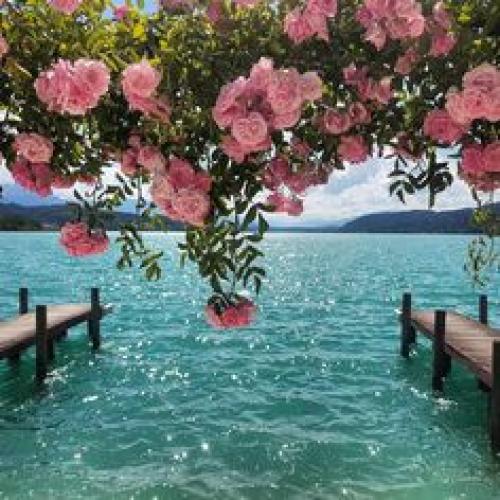In a YouTube video titled “Here’s What Life on Different Planets Would Look Like” the speaker discusses the challenges of humans trying to survive on different planets. They describe the orange skin of the man in the video, which is a result of the carotenoids and carrots consumed by people on Mars to protect themselves from harmful UV rays. They also discuss the gravity of different planets and its effect on human movement, noting that on Venus, for example, the gravity is weaker, which means that people weigh significantly less. The speaker highlights the extreme temperatures on gas giants, the lack of solid surfaces on planets like Neptune and Uranus, and the challenges faced by humans in trying to survive on those planets. The video concludes by observing that while it may be impossible for humans to evolve to survive on certain planets, it is still fascinating to explore the different environments of our solar system.
- (00:00:00) In this section of the video, the speaker discusses the challenges faced by humans in trying to survive on different planets. They begin by pointing out the orange skin of the man in the video, noting that it is a result of the carotenoids and carrots consumed by people on Mars to protect themselves from the harmful UV rays. The speaker then moves on to discuss the gravity of different planets and its effect on human movement. They explain that on Mercury, for example, the gravity is weaker, which means that people weigh significantly less. However, due to the extreme temperatures on Mercury, humans cannot survive without protective gear. The speaker also discusses the challenges faced by humans in trying to survive on gas giants, noting that the extreme temperatures and the lack of solid surfaces on planets like Neptune and Uranus. The speaker concludes by noting that while it may be impossible for humans to evolve to survive on certain planets, it is still fascinating to explore the different environments of our solar system.
- (00:05:00) In this section of the video, the host discusses the next planet on the itinerary after Earth, which is Venus. Venus is often called Earth’s twin due to their similar size and density. The atmosphere on Venus is made up of carbon dioxide, and descending through it means passing thick clouds of sulfuric acid. The host notes that running on Venus is possible but the weight on Venus runs at around 8.5 miles per hour instead of Earth’s 12 miles per hour. Mars, the next planet on the itinerary, is extremely cold with an average temperature of negative 80 degrees Fahrenheit. The surface of Mars is covered in red-colored dust, which would make running difficult. The host describes the dust storms on Mars, which can sometimes cover the entire planet. Mars’ weight would be much smaller than Earth’s, at 58 pounds, allowing for an impressive speed of 12 miles per hour. The next planet discussed is Jupiter, a gas giant that is colorful and striped. Jupiter’s wind speeds range from 200 to 400 miles per hour, making it extremely windy. On Saturn, the weight would again be around 165 pounds due to the similarity of Saturn’s gravity to Earth’s. However, the extreme conditions on Saturn and the bulky space suit would make running much slower, at a speed of about 4 miles per hour. Lastly, the host discusses the blue-green ice giant Uranus, which is not solid and would not allow for running to take place.
- (00:10:00) In this section of the video, the narrator discusses the impact of wind on Mars, specifically focusing on the blue dunes that form on the planet’s surface. The dunes are formed by strong, relentless winds influenced by factors such as temperature and atmospheric circulation. The are three billion years old and have not changed much due to the planet’s thin atmosphere and elliptical orbit. The narrator also discusses the conditions that lead to dune formation on Mars, explaining that the atmosphere is thin and the wind is strong. Winds on Mars usually move at a speed of 10 to 20 miles per hour, and the dunes are not actually blue, but rather, the bluish patches represent colder portions of the dunes with warmer regions being yellowish orange. The narrator touches briefly on the seasons on Mars, which are harsher in the southern hemisphere than in the north, and shows a series of photos of planets in various locations. It’s evident that the narrator is fascinated by the natural phenomena that occur on these planets and is eager to share them with the audience.
- (00:15:00) In this section, the speaker discusses Saturn and its unique characteristics. Saturn is a giant gas ball primarily made of gases and has a diameter of more than 36,000 miles, which is nine times wider than Earth. The planet is known for its wind, with winds that are more than four times stronger than those on Earth. Saturn’s day lasts 10 hours and 14 minutes, but it takes the planet 29 Earth years to complete one orbit around the Sun. Saturn’s radial crisis is more than 70,000 miles wide, comparable to several moons in our solar system. Saturn has more than 50 moons, and recent discoveries have shown unusual hydrothermal activity on one of its moons, Enceladus. Enceladus has four tiger-stripe features near one of its poles, and it is believed that there is an ocean of water and ice beneath these stripes, with water and ice erupting from the area. Scientists have found that life could potentially develop in the oceans on Enceladus. The speaker also mentions the search for potentially habitable exoplanets and the potential for life to appear on the planets orbiting dwarf stars like Gliese 876b and Tea Gardens B, located around 12 light years away from our solar system. The gravity on these planets is stronger than on Earth, making it challenging for humans to explore them.
- (00:20:00) In this section, the YouTube video discusses three potentially habitable planets: Kepler-62e, LHS1140b, and Trappist-1. Kepler-62e is about 1.5 times the size of Earth and has a warm and hospitable atmosphere with cloudy skies. Scientists believe it may have water oceans and could potentially host living beings. LHS1140b is a rocky planet with a radius 60% larger than Earth and a mass seven times greater, making it one of the densest planets found. It has a









